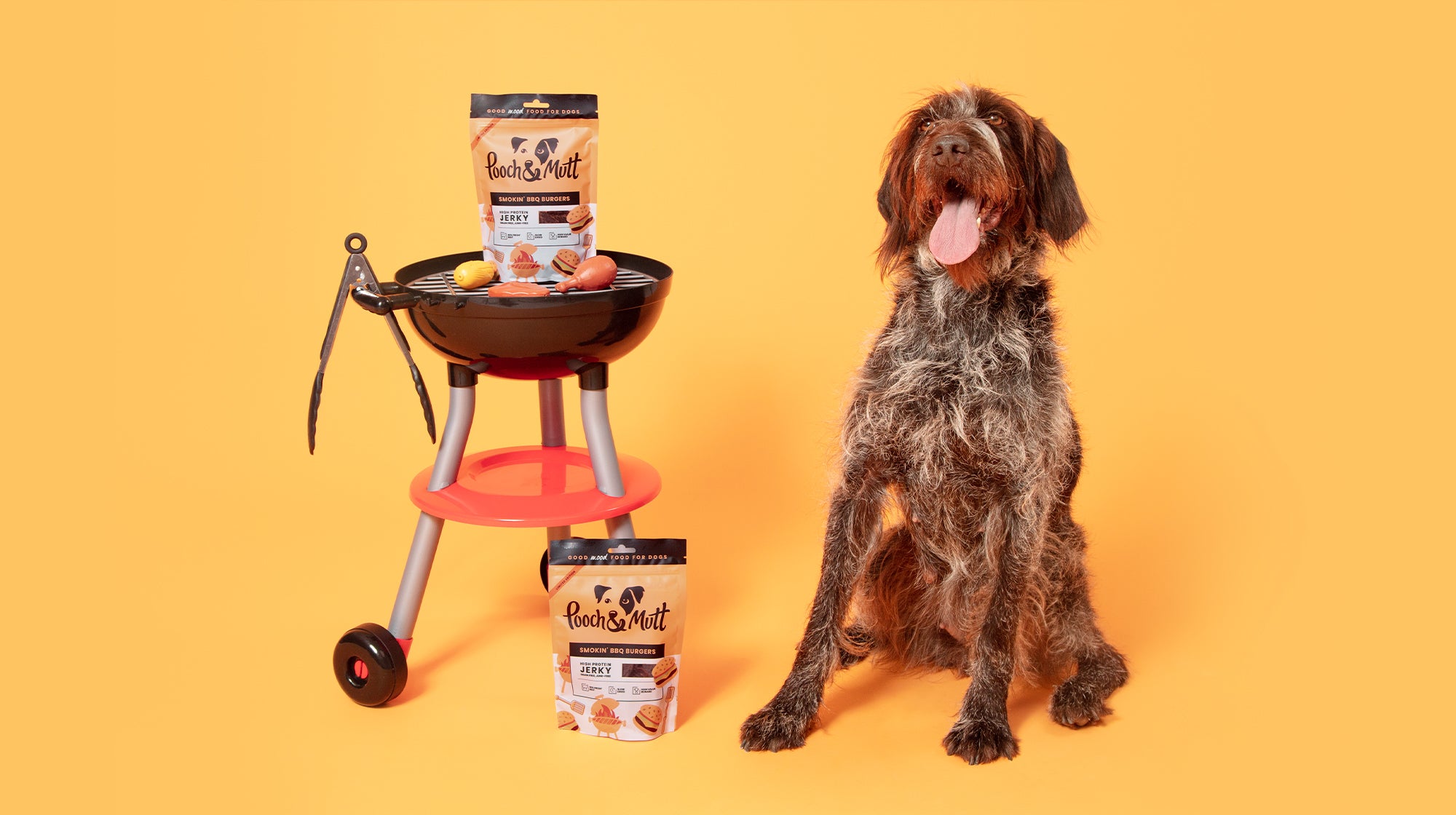
FREE UK DELIVERY ON ORDERS OVER £39.99

Summertime in the UK can be somewhat crazy - rainy one week, then the next, temperatures are soaring. When heatwaves are an ever more regular occurrence, our dogs can find it hard to relax, feel thirsty more often and may even go off their food.
So if your dog isn’t eating in hot weather, what can you feed them to keep them satisfied and cool? As dogs’ digestive systems are different to ours, you won’t want to cause havoc with their usual gut-based activity; so we’ve looked into potential summer foods you might consider feeding your dog and whether their canine tummies can handle it.
Read on to understand what to feed, and not feed your dog in the summer.
When you’re thinking of foods to feed dogs in the summer, you’ll probably envision treats with seasonal flavours, or pleasantly cold food to keep your pooch cool. This could range from fruit and veg kept in the fridge or even ice lollies. We all know how great it is to crack open an ice cold freeze pop when the sun is beating down on us, and dogs can get the same cooling effect when eating certain foods.
So let’s delve into which foods can be dished out without worry, and which should be avoided…

✓ Watermelon is a summer favourite for humans, and it can be a tasty, refreshing treat for dogs, too. Just be sure to remove skin and seeds, only serve the fruit flesh, and don’t feed too much watermelon in one portion or replace any meals with it.
Keep watermelon as an occasional treat - though it’s healthy, it contains natural sugar that can cause an upset stomach if gorged on.
X A punnet of cherries is a picnic staple for us, but there are a few reasons why you should not feed your dog cherries. The most obvious reason is the choking hazard of cherry stones - but just as importantly, the stones also carry the risk of cyanide poisoning. Even if you remove the cherry flesh from the stone and stalk, it isn’t too friendly for doggo digestion, so it’s a better idea to choose a safer fruit or treat.
X Though one of your first thoughts on a hot summer day might be to give your dog a bowl of creamy, vanilla-flavoured delight, it’s sadly off limits for dogs! There are too many elements of ice cream that lead to pain and discomfort for a canine’s digestive system.
Most importantly, ice cream may contain Xylitol - an artificial sweetener that appears in human foods but is toxic to dogs and should be avoided at all costs. Alongside this, many dogs are allergic to dairy or suffer from lactose intolerance; and ice cream is high in sugar and fat, which is hard on digestion and could lead to stomach upset. Sorry, pooches - but it’s best to avoid ice cream altogether, unless it’s a pooch-friendly version from your local pet store.
✓ Cucumbers are a cooling, hydrating treat for dogs which contain a good amount of antioxidants and nutrients. It’s advisable to remove the skin first, which can be tough and not as tasty for your pooch, and serve in moderation. At first, feed a small amount to your dog and keep an eye on them to check they don’t have any untoward side effects, such as diarrhoea. If they digest it just fine, it can be a regular and refreshing treat for them.
✓ Pineapples make for an exciting treat for dogs in the summer, as a tropical fruit they contain lots of vitamins, such as vitamin C and vitamin B6, that can make up part of a healthy diet.
As you’d expect, remove the prickly outer skin and carve out the softest, most supple part of the pineapple flesh. Give your dog a small piece to see if they like it, then feed a portion in moderation, chopped into bite-sized pieces.
Beware that too much pineapple contains a lot of natural sugar which could cause a dodgy stomach later. It’s a good idea to stick to fresh pineapple, too - as tinned fruit can contain overly sweet syrups or artificial sweetener.
✓ Nothing beats the fragrant flavour of summer strawberries - and luckily for dogs, they can eat them with you. As always, offer strawberries to your pooch in a small portion as an occasional treat, as too many can cause diarrhoea and a sore stomach. Be sure to wash the strawberries, remove all the stalks and chop them into small, munchable pieces. Yum!

It’s very normal for a dog to eat less in the summer. Dogs can feel too hot to keep up their usual amount of exercise, and this reduced activity level can sometimes affect their appetite. There are also other factors, such as the rising temperatures overwhelming your pooch’s senses, and so strong-flavoured dog food comes off less appetising.
If your pooch isn’t eating as much due to the hot weather, it’s completely normal - but there are some steps you can take to make sure they’re nourished and happy each day.
If you want to chat about how your dog’s eating patterns change with the seasons, get in touch with us - or try our healthy grain-free dog treats to help whet your dog’s appetite in the summer.
References
‘Xylitol toxicity in dogs’, 2010 - National Library of Medicine.
Comments (0)
Leave a comment